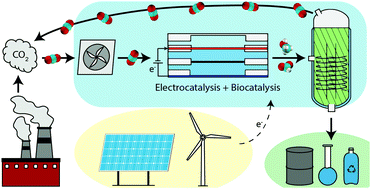Designing an innovation system to support profitable electro- and bio-catalytic carbon upgrade†
Abstract
Carbon capture, utilisation, and storage (CCUS) can mitigate an estimated 14–20% of CO2 emissions by 2050. We evaluate an integrated electrocatalysis and biocatalysis CCUS pathway, using externally-supplied renewable electricity to convert over 12 MtCO2 to poly(3-hydroxybutyrate) via methanol and formate intermediates. A techno-economic and policy-innovation analysis provides insight into global CCUS innovation. Results suggest that innovation should focus on improving methanol faradaic efficiency, formate biocatalysis efficiency, electrocatalysis current density, and catalyst performance. Methanol and formate composition influences performance, but higher formate content can improve economics by US$3.8B over a 30 year lifetime. Profitable scenarios hinge on reducing methanol separation costs – through innovation or reduced energy usage – along with cheap renewable electricity and/or carbon pricing. Our evaluation of the global innovation status signifies that coordinated strategies are required to realise emissions cuts from CCUS. Innovation can be spurred by targeted investments and policies that promote emissions reductions.



 Please wait while we load your content...
Please wait while we load your content...
